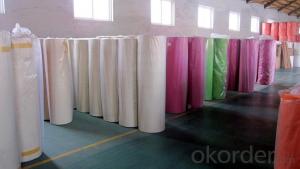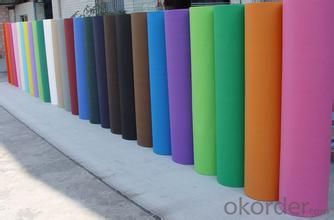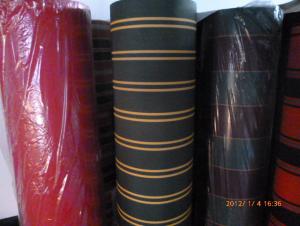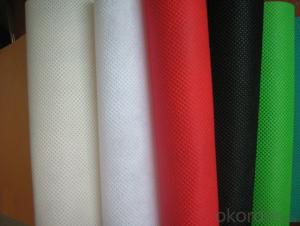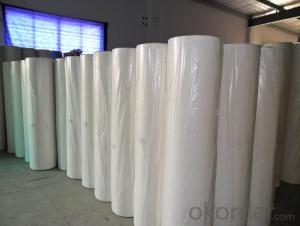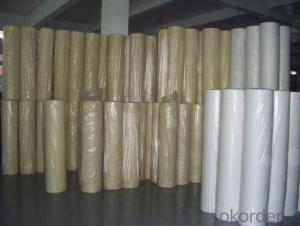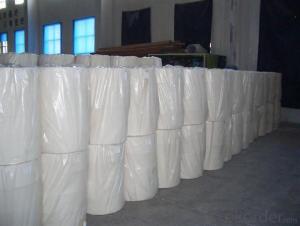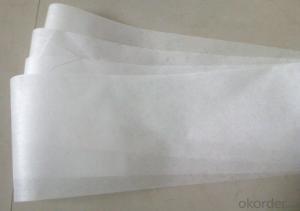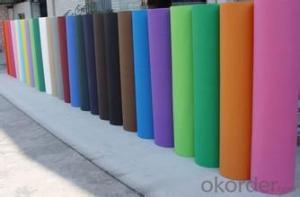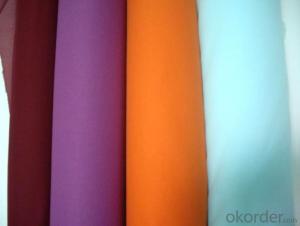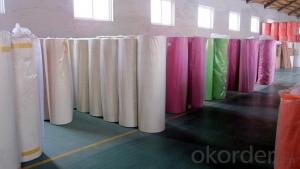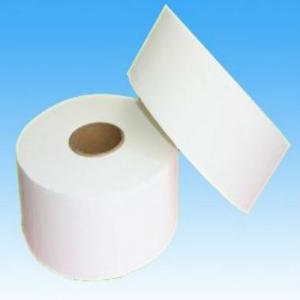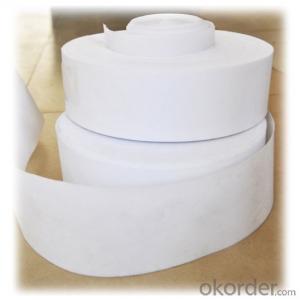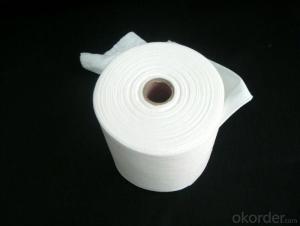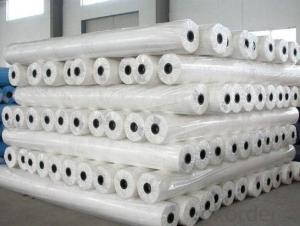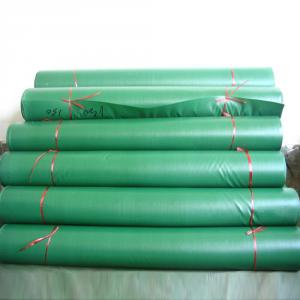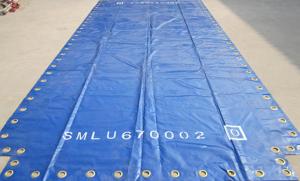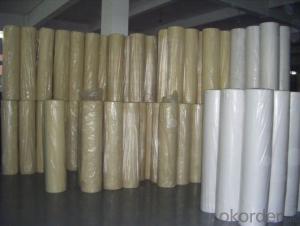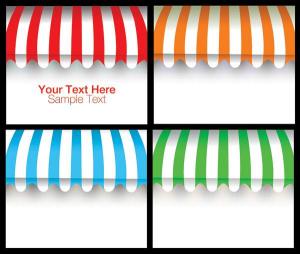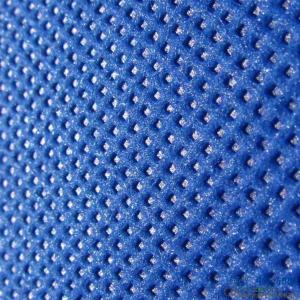Hot Export Product PP Nonwoven Fabric spunbond non woven fabric For Agriculture
- Loading Port:
- Shanghai
- Payment Terms:
- TT OR LC
- Min Order Qty:
- 1000 roll
- Supply Capability:
- 10000 roll/month
OKorder Service Pledge
OKorder Financial Service
You Might Also Like
 PP non woven weed control mat is made of environmentally friendly raw materials, pp spunbond nonwoven fabric. It used to prevent the growth of weed, without the use of potentially dangerous chemical sprays or labor intensive hoeing. Once installed, weed mat will continue providing protection for years without maintenance.
PP non woven weed control mat is made of environmentally friendly raw materials, pp spunbond nonwoven fabric. It used to prevent the growth of weed, without the use of potentially dangerous chemical sprays or labor intensive hoeing. Once installed, weed mat will continue providing protection for years without maintenance.
They are permeable fabrics, which allow air, water and nutrients to pass through, and designed to block out the sun to reduce photosynthesis and stop weed growth.
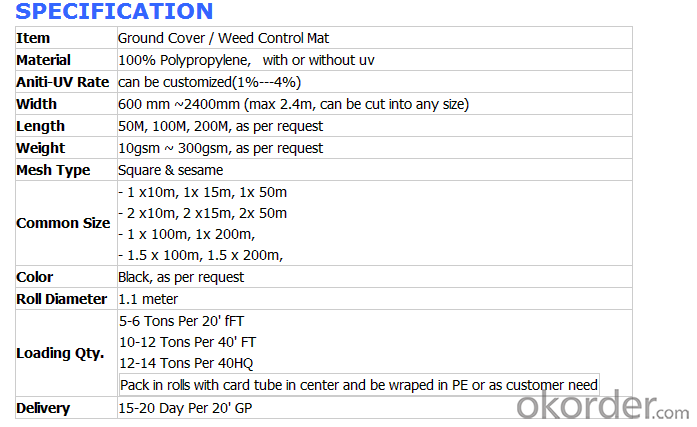
The use of landscaping fabrics has become extremely popular in recent years for many reasons:
1. Leisure time is maximised - the need for weeding and on-going maintenance is minimised
2. Environmentally friendly - no need for chemical based weed killers
3. Promotes healthier plants - it allows the soil to breath and water to permeate
We offer different types of weed control fabrics to suit all applications and budgets.
1. Available in a range of sizes & materials to suit various applications from small to large landscaping projects, in both commercial and domestic situations.
2. All our landscape fabrics are UV stabilised
3. Ideal for use under paths, patios, decking, paving, bark mulch, gravel etc.
FEATURES:
1. Weed suppressant and drainage control landscaping fabric
2. Spun bonded non-woven fabric – will not fray when cut
3. Easy to use
4. Environmentally friendly
5. Allows water, air and nutrients through, suppressing weeds without the use of chemicals
6. Good alternative to Plantex® where cost is a factor
7. UV Stabilised
8. Reduces the level of watering required due to the slower rate of water evaporation
FUNCTION:
1. Cover crops in the ground surface,prevent weeds and against the insect
2. Controlling soil humidity and the temperature
3. Does not affect the growth of the crops
4. Protects plants from harmfully solar radiation
5. Air permeability, water permeability help crops growth.
6. Mothproof, eco-friendly, breathable, anti-bacteria, tear-resistant, fusible
APPLICATIONS:
1. Weed block for landscaped garden beds
2. Permeable liners for planters (stops soil erosion)
3. Weed control under wooden decking
4. Geotextile for separating aggregate / soils under walkway blocks or bricks
5. Assists in preventing paving from settling unevenly
6. Landscape fabric prevents soil erosion
Health - Hygiene & Medical
Surgical Gowns
Gloves
Face Masks
Foot covers
Diapers
Caps
Bedsheets
Curtains
Pillow Covers
Slippers
Packaging
Sleeping Bags
Tarpaulins
Tents
Artificial Leather
Bags for Rice/Sugar etc.
Luggage
Vacuum Cleaner Bags
Tea and Coffee Bags
Buff Pads
Shopping Bags
Agriculture
Crop Covers
Turf Protections
Nursery Over wintering
Weed Control Fabrics
Root Bags
Containers
Capillary Matting
Other types of covers
Furniture Upholstery
Roofing and Tile Underlayment
Acoustical Ceilings
Insulation
House wrap
Pipe wrap
Sofa and Mattress Lining
Shoes & Garments
Coveralls
Pillow cases
Airline Headrests
Interlinings
Clothing and Glove insulation
Bra and Shoulder Padding
ADVANTAGES:
1. Lower labour costs as no weeding maintenance for years;
2. Water seeps through and can conserve soil moisture for improved growing conditions;
3. Air escapes – humidity rises through the mat for a more controlled growing environment;
4. Increase crop yields close to 25% due to improved growing conditions and absence of water stress and competition of nutrients absorption from weeds;
5. Minimises bacteria and fungus problems especially Algae;
6. Strong, woven construction or pressed fibre sheet resists tears and punctures;
7. Resistant to mildew, rot, water, sunlight and most of the agricultural chemicals
8. Fertilizer is applied on the mat, thus helping the owner or estate manager to monitor the progress of manuring;
9. Prevents soil erosion or leaching of soil nutrients or fertilizers applied;
10. Environmental friendly.
- Q: Textile industry after finishing what pollution, especially air pollution
- Hello I am a person engaged in the field of environmental science sewage remediation industry a year first said that the current government sewage on the enterprise requirements for the main COD and ammonia nitrogen because the two will cause serious harm to the river
- Q: What is the "gold and silver wire" used in the textile industry?
- Gold and silver: that is, the physical method will be coated with color PET polyester film cut into very fine wire. Through the polyester film or nylon film plating method to make the surface coated with a layer of aluminum or silver, and then according to the textile needs to be processed into different width of the wire
- Q: Textile printing and dyeing process which
- Dyeing is a more complex process, different quality of cloth dyeing process is different, cotton, polyester cotton, nylon, polyester, chemical fiber products, blended products and so on. Some use of pad dyeing, roll dyeing, and some must use high temperature and high pressure dyeing, and some only once, and some to color several times.
- Q: What is a textile fabric?
- But also to distinguish a few concepts: people cotton fabric: that is not dyeing or other finishing or processing of the loom down the cloth. The premise is that people cotton, so of course pure glue rather than blended.
- Q: What are the Advantages and Disadvantages of PE and PVC in Textile Fabrics
- pvc material rain better than the point, PVC resistance than PE slightly better, but
- Q: What are the problems with the transformation and upgrading of the processing trade of textile enterprises?
- To ensure the stable development of the textile industry at the same time, speed up structural adjustment, promote industrial upgrading. Planning on the one hand based on the current, with a series of policies to ease the pressure on textile enterprises; the other hand, focusing on long-term, and actively promote the textile industry to speed up structural adjustment and industrial upgrading pace.
- Q: What is the number of raw materials for textile enterprises?
- Generally based on the variety of cloth, cloth type, speed and other parameters, in order to determine the sizing rate, slurry type
- Q: China textile products do not how points? What kind of?
- Scale, distribution tends to focus. Jiangsu Province as a full range of fiber Dasheng fabric Dasheng clothing province, clothing annual output, sales, profits are among the forefront of the country
- Q: What is a large circular machine and a small circular machine in the textile?
- As the knitting machine of the circular knitting machine (the number of yarns in the enterprise is called the number of incoming yarns or the number of the circle), the speed is high, the output is high, the flower shape is fast, the fabric quality is good, the process is small, the product adaptability is strong , So the development soon.
- Q: How does the chemical composition of the textile be analyzed?
- The chemical composition of a substance refers to the proportion of each chemical element, expressed in experimental form
Send your message to us
Hot Export Product PP Nonwoven Fabric spunbond non woven fabric For Agriculture
- Loading Port:
- Shanghai
- Payment Terms:
- TT OR LC
- Min Order Qty:
- 1000 roll
- Supply Capability:
- 10000 roll/month
OKorder Service Pledge
OKorder Financial Service
Similar products
Hot products
Hot Searches
